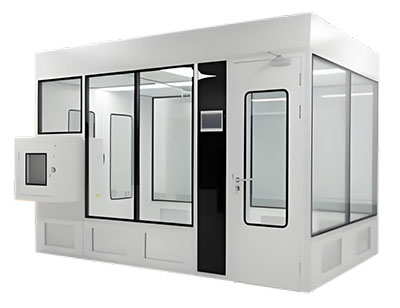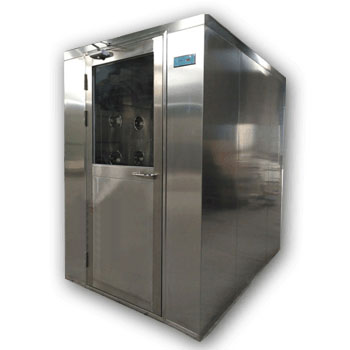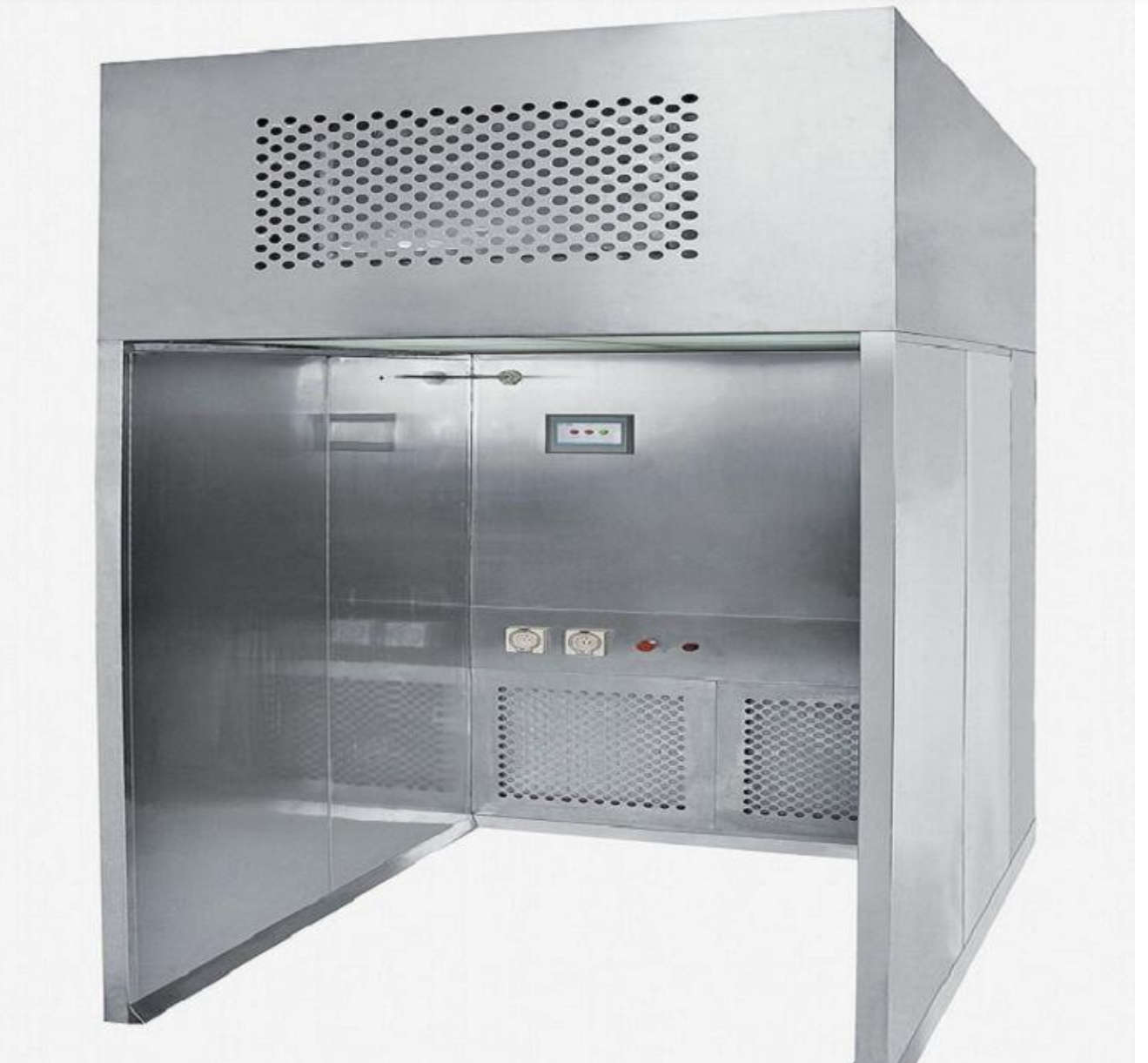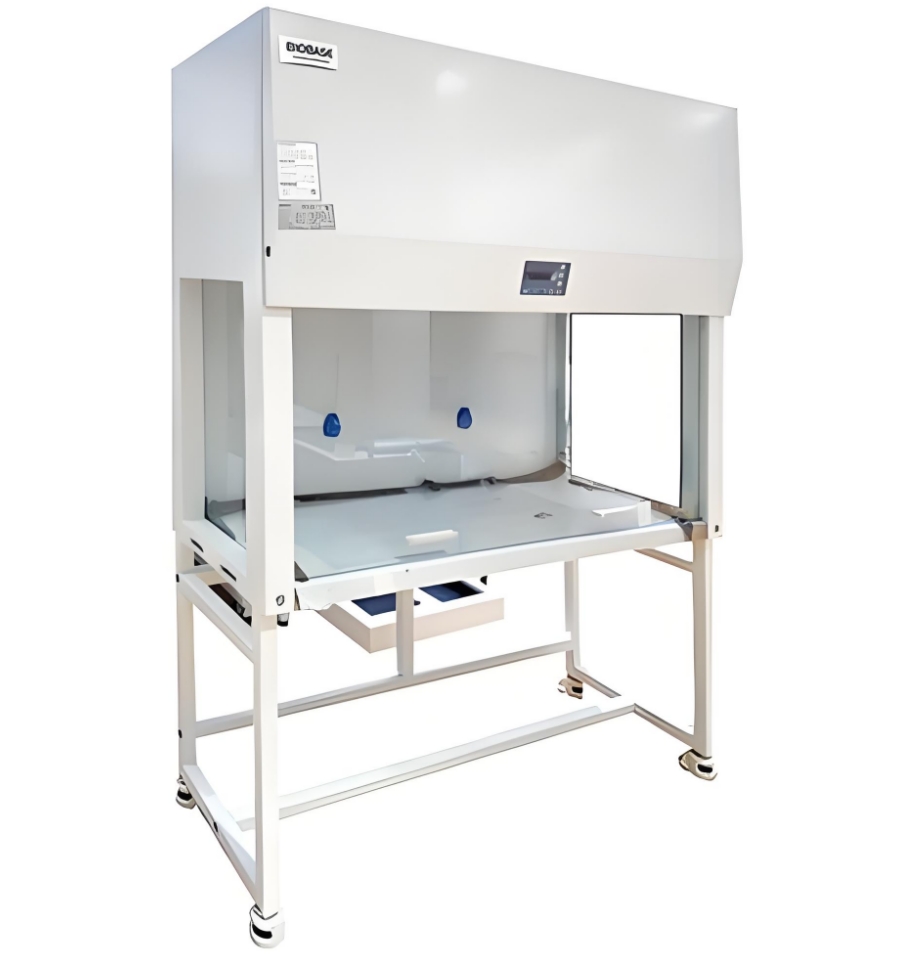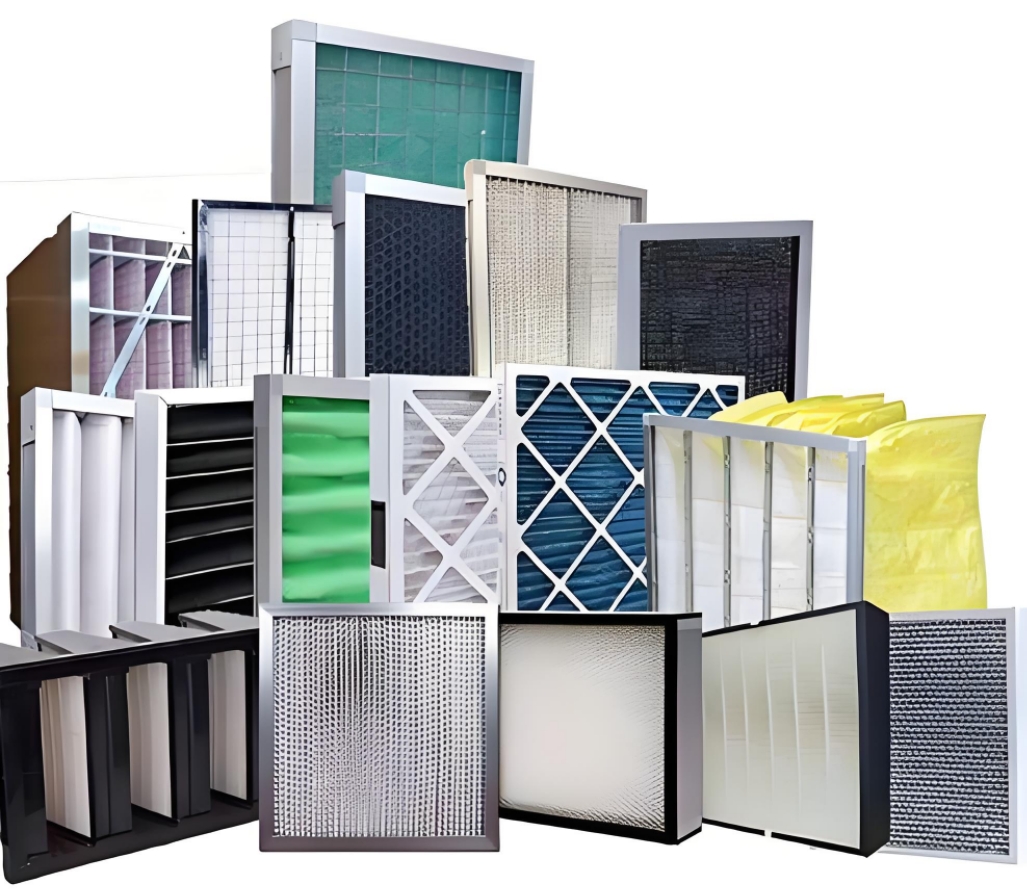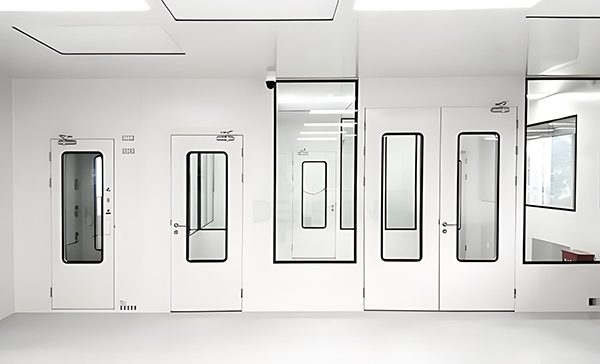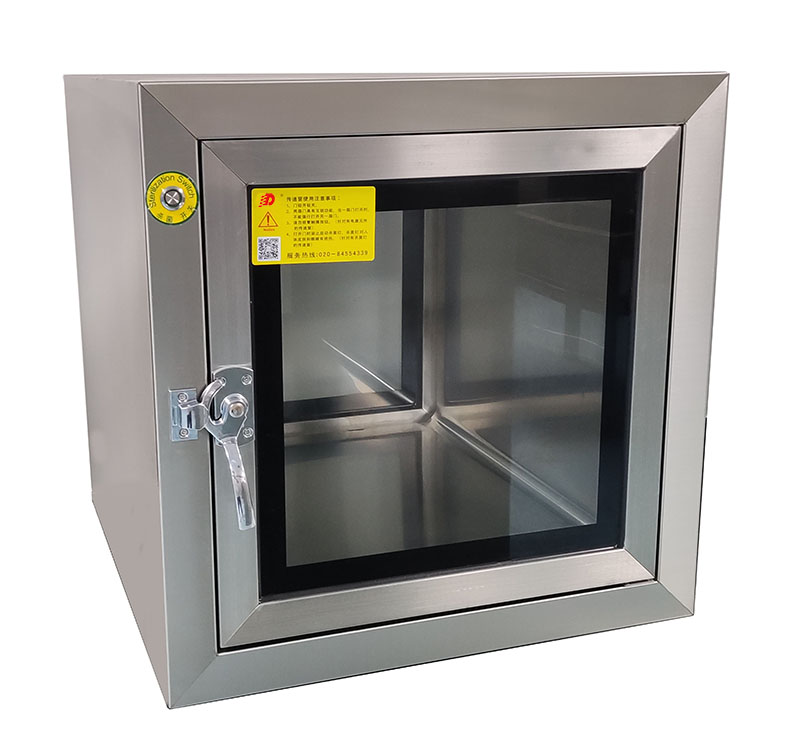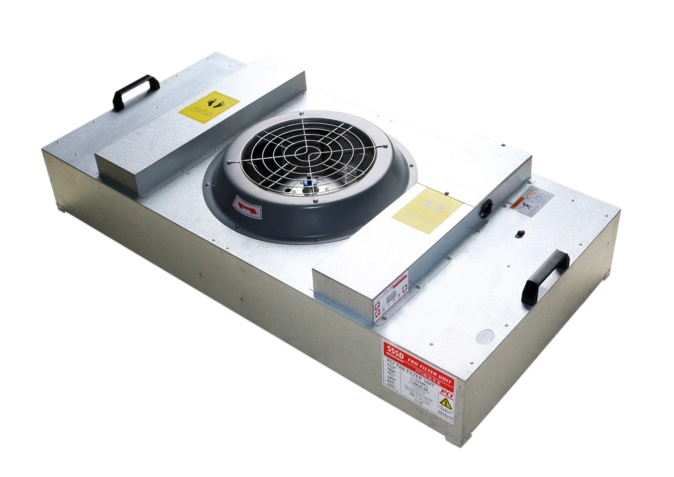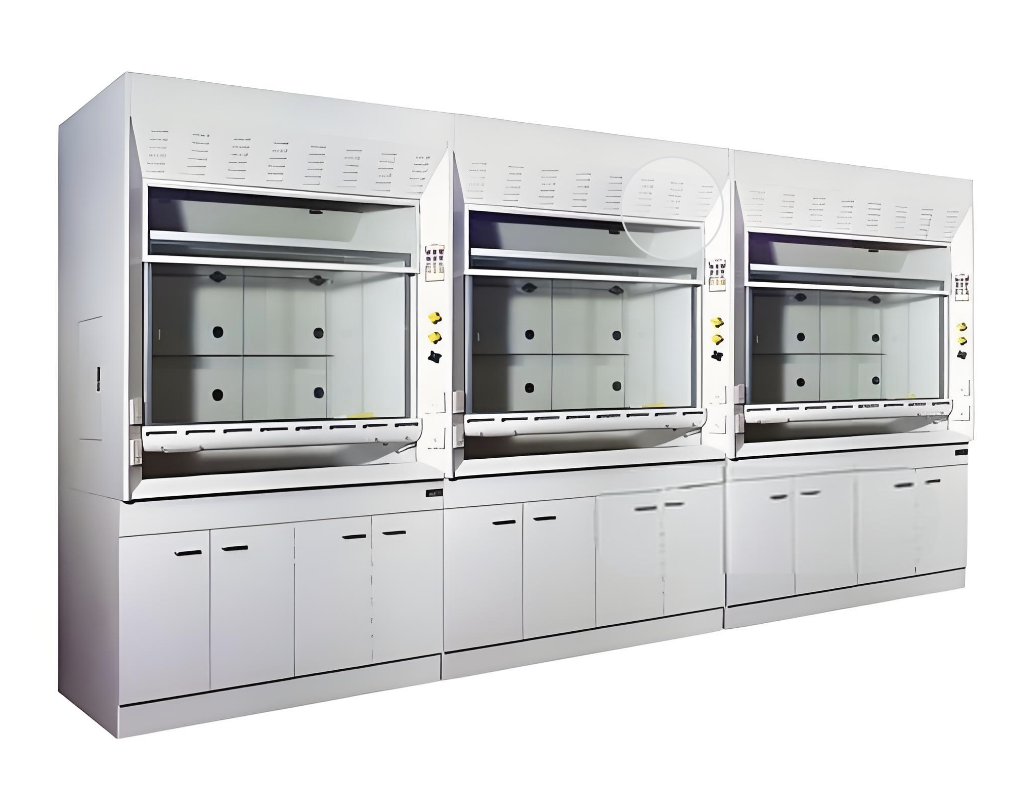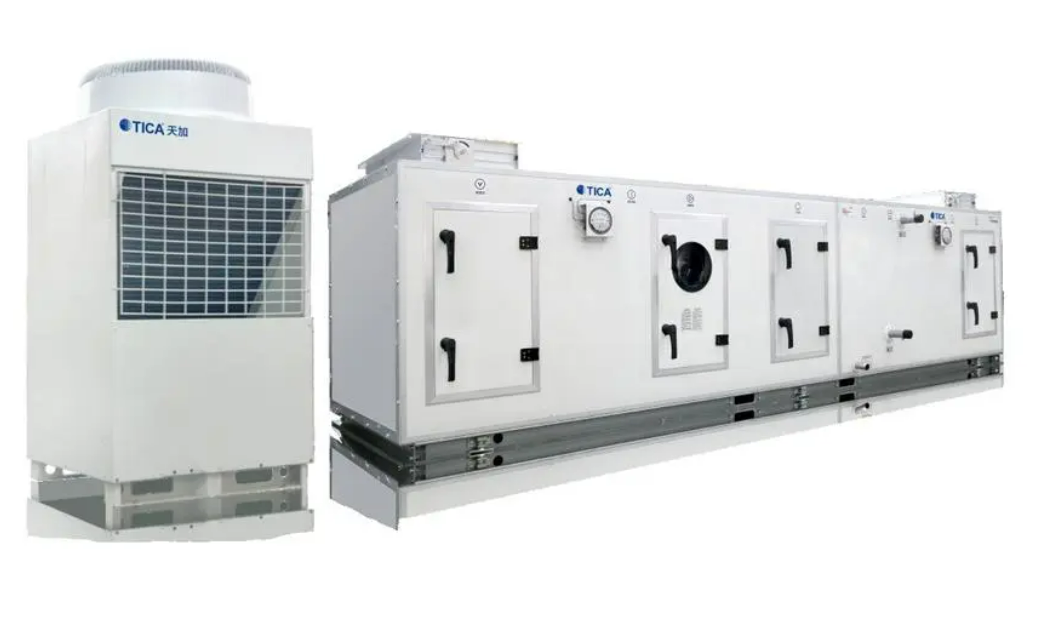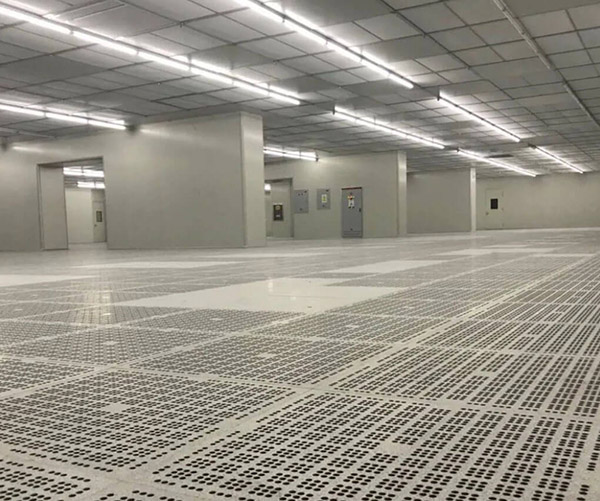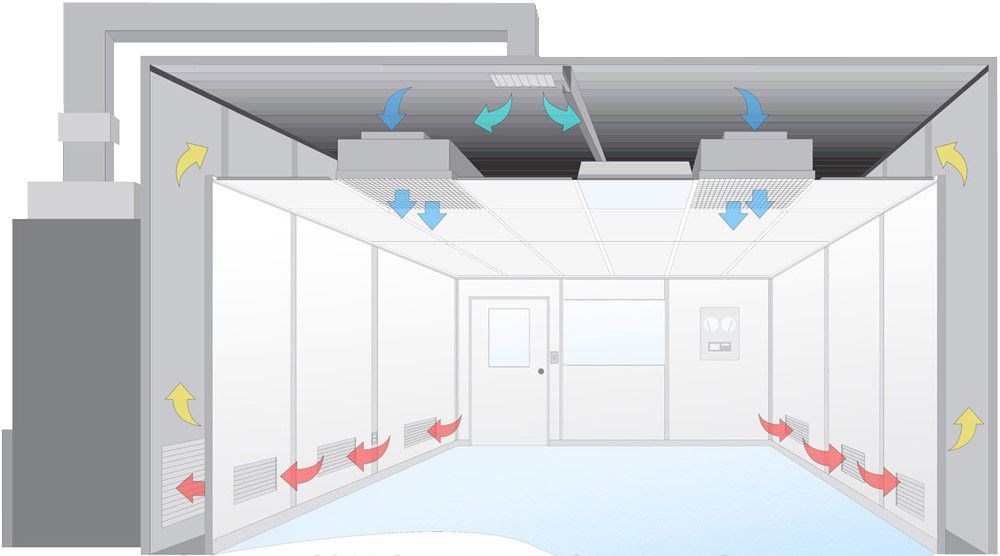Explore essential strategies and insights for designing and controlling cleanroom airflow with our comprehensive guide to best practices.
1. What is Cleanroom Airflow?
Cleanroom airflow refers to the controlled movement of air within a contamination-controlled environment, designed to maintain specified particle cleanliness levels as defined by standards such as ISO 14644-1. The airflow system is critical for:
- Preventing particle accumulation on critical surfaces
- Diluting or removing airborne contaminants through directed flow patterns
- Controlling temperature and humidity within tight tolerances
- Ensuring operational consistency in sensitive manufacturing processes
Effective airflow design balances air change rates (ACH), pressure differentials, and flow dynamics to achieve the required cleanliness class—ranging from ISO Class 1 (ultra-clean) to ISO Class 9 (basic CleanRoom).
2. Cleanroom Airflow – Recirculating
System Design & Functionality
Recirculating airflow systems extract and filter air within the cleanroom, reintroducing it after passing through HEPA (High-Efficiency Particulate Air) or ULPA (Ultra-Low Penetration Air) filters. Key characteristics include:
- Air change rates typically between 15-60 ACH for non-critical applications
- Energy efficiency due to reduced outside air intake
- Use of ceiling-mounted diffusers and floor-mounted returns
- Pressure control via supply-exhaust air balance
Applications & Standards
Commonly used in:
- Medical device assembly (ISO Class 7-8)
- Pharmaceutical packaging areas
- Electronics component handling
- Microbiological laboratories (non-sterile)
Design must comply with ISO 14644-4 for operational consistency and EU GMP Annex 1 for pharmaceutical applications.
3. Cleanroom Airflow – One-Pass
Operational Principles
One-pass airflow systems supply 100% fresh air, passing through the cleanroom only once before exhausting. Key features:
- Air change rates exceeding 200 ACH for critical environments
- Elimination of recirculated air to prevent contaminant buildup
- Use of HEPA/ULPA filters in supply air streams
- Requires significant energy input for conditioning 100% fresh air
Critical Applications
Essential in environments where contaminant control is paramount:
- Semiconductor wafer fabrication (ISO Class 1-5)
- Sterile pharmaceutical manufacturing (Grade A/B)
- Biological safety cabinets (BSC Class III)
- Microelectronics lithography processes
Compliance with SEMI F20 for semiconductor facilities and FDA cGMP for sterile drug production is mandatory.
4. What is Mixed Airflow?
Mixed airflow (also known as non-unidirectional flow) combines elements of recirculating and one-pass systems, creating a hybrid design that balances efficiency and contamination control. Key characteristics:
Design Components
- Partial recirculation with controlled fresh air intake
- Zoned airflow patterns for varying cleanliness needs
- Combination of diffuser-return and unidirectional flow sections
- Adaptive control systems for dynamic load adjustment
Optimal Use Cases
- Large-scale cleanrooms with diverse process requirements
- Research and development facilities with changing needs
- Medical device manufacturing with mixed criticality areas
- Pharmaceutical facilities requiring multiple cleanliness classes
Mixed airflow systems typically achieve ISO Class 5-8, with energy consumption 30-50% lower than full one-pass systems in non-critical zones.
5. Turbulent Air Flow
Turbulent airflow is characterized by irregular, eddying motion that creates unpredictable particle dispersion. In cleanroom contexts, turbulence must be managed to prevent contaminant accumulation. Key dynamics:
Flow Characteristics
- Reynolds number > 4000 indicating turbulent flow regime
- Velocity fluctuations creating eddies and vortices
- Particle transport via random eddy motions
- Potential for particle deposition on surfaces due to flow separation
Turbulent flow in cleanrooms is typically associated with:
- Air velocities > 0.5 m/s in non-unidirectional systems
- Obstructions such as equipment or personnel movement
- Suboptimal diffuser/return placement
Control Measures
Mitigation strategies include:
- Streamlining equipment design to reduce flow obstruction
- Implementing proper personnel gowning and movement protocols
- Using computational fluid dynamics (CFD) for airflow modeling
- Maintaining minimum air change rates of 20 ACH to dilute turbulence
While turbulence is generally undesirable, controlled levels are acceptable in lower-class cleanrooms with proper design considerations.
6. Laminar vs. Turbulent
Comparative Analysis of Airflow Regimes in Cleanroom Applications
The choice between laminar and turbulent flow depends on the criticality of the process, with laminar flow reserved for applications where particle control is paramount.
7. Cleanroom Laminar Flow System Design
Design Principles
Laminar flow systems are designed to create unidirectional airflow with minimal turbulence. Key design considerations:
- Flow Direction: Vertical (ceiling-to-floor) or horizontal (wall-to-wall)
- Filter Coverage: 100% ceiling coverage with HEPA/ULPA filters for vertical flow
- Velocity Control: Maintaining 0.3-0.5 m/s (60-100 fpm) for optimal particle removal
- Return Air Design: Perimeter floor returns or raised floor plenums for uniform flow
- Equipment Placement: Streamlined design to avoid flow obstruction
Design Challenges & Solutions
| Challenge | Solution |
|---|---|
| Flow disruption from equipment | Aerodynamic enclosures and flow deflectors |
| Non-uniform velocity distribution | Diffuser optimization and CFD modeling |
| Personnel-induced turbulence | Strict gowning protocols and restricted movement |
Successful laminar flow design requires integration of ISO 14644-3 engineering guidelines with site-specific process requirements to achieve consistent cleanliness performance.
8. Cleanroom Pressure Control
Pressure control is critical for maintaining cleanroom integrity by preventing cross-contamination and ensuring directional airflow. Key control mechanisms:
Pressure Differential Standards
- Positive Pressure: 10-15 Pa (0.04-0.06 in. wg) relative to adjacent areas
- Negative Pressure: -10 to -15 Pa for containment of hazardous materials
- Graded Pressures: Stepwise pressure drops between cleanliness zones
- Airlock Pressures: 5-10 Pa buffer zones to minimize contamination ingress
Pressures are measured using differential pressure transducers with accuracy ±0.5 Pa for critical applications.
Control Strategies
- Supply-Exhaust Balance: Modulating supply fans to maintain pressure setpoints
- Airflow Tracking: Using airflow stations to monitor and adjust air volumes
- Automatic Dampers: Motorized dampers for dynamic pressure correction
- Pressure Relief Vents: Passive vents to prevent overpressurization during equipment operation
- Alarm Systems: Visual/audio alerts for pressure deviations beyond set limits
Modern systems integrate BMS (Building Management Systems) for real-time pressure monitoring and adaptive control.
9. Industries Requiring Laminar Flow
Critical Sectors Dependent on Laminar Flow Cleanrooms
Semiconductor Manufacturing
Laminar flow is essential for wafer fabrication, where particles >0.1μm can cause device failure. ISO Class 1-5 cleanrooms are standard for lithography and deposition processes.
Pharmaceutical Sterile Processing
Sterile drug manufacturing requires Grade A (ISO Class 5) laminar flow for aseptic filling and critical processing steps, complying with EU GMP Annex 1 and FDA cGMP.
Biomedical Devices & Implants
Implantable device production uses ISO Class 5-6 cleanrooms with laminar flow to prevent biological contamination and ensure sterility assurance.
Microelectronics & Optics
Laminar flow is critical for optic lens manufacturing and microelectronics assembly, where particle contamination affects product performance and reliability.
10. Industries Where Turbulent Flow is Acceptable
Sectors Utilizing Turbulent Flow Cleanrooms with Proper Controls
Medical Device Assembly
Non-sterile device assembly (e.g., catheters, diagnostic tools) uses ISO Class 7-8 cleanrooms with turbulent flow, provided particle counts are controlled within process limits.
Pharmaceutical Packaging
Primary and secondary packaging areas for non-sterile drugs operate in ISO Class 8 Cleanrooms with turbulent flow, complying with EU GMP Annex 1 for particulate control.
Biomedical Research Labs
Non-sterile research environments (e.g., cell culture labs, assay development) use turbulent flow cleanrooms (ISO Class 7-8) to control environmental contaminants without requiring laminar flow.
Optical Disk Manufacturing
Production of CDs, DVDs, and Blu-ray discs uses ISO Class 6-7 cleanrooms with turbulent flow, as particle contamination impacts data storage quality but allows for controlled flow dynamics.
In all cases, turbulent flow cleanrooms must implement proper airflow management, including adequate air change rates and filtration, to maintain specified cleanliness levels.
Optimized for operational excellence in critical environments
Compliant with ISO 14644, EU GMP, and industry best practices
 +86 18186671616
+86 18186671616 Jason@cleanroomequips.com
Jason@cleanroomequips.com
 MENU
MENU

